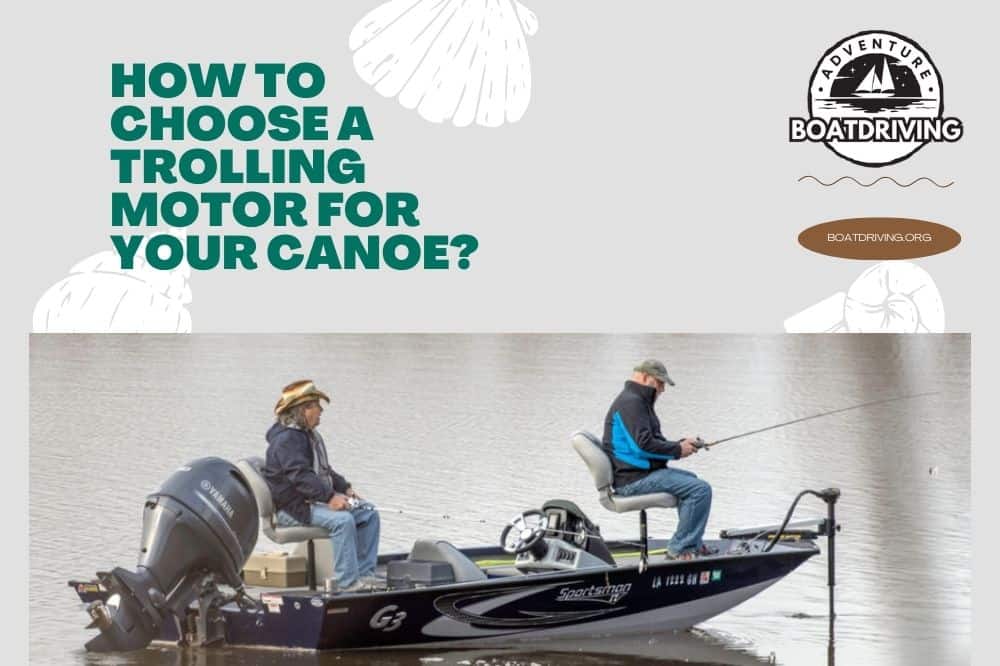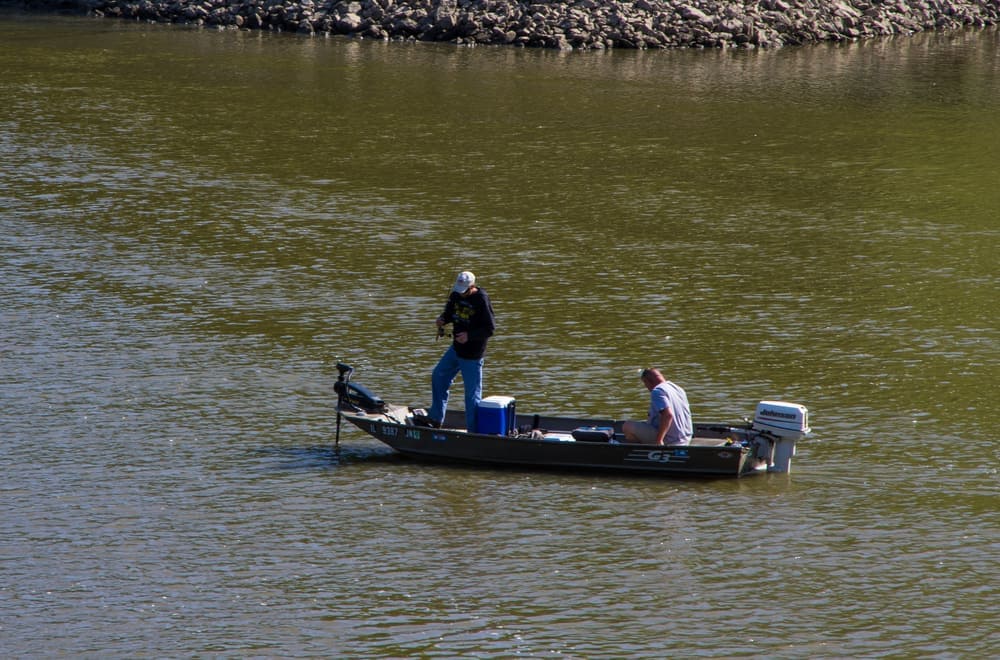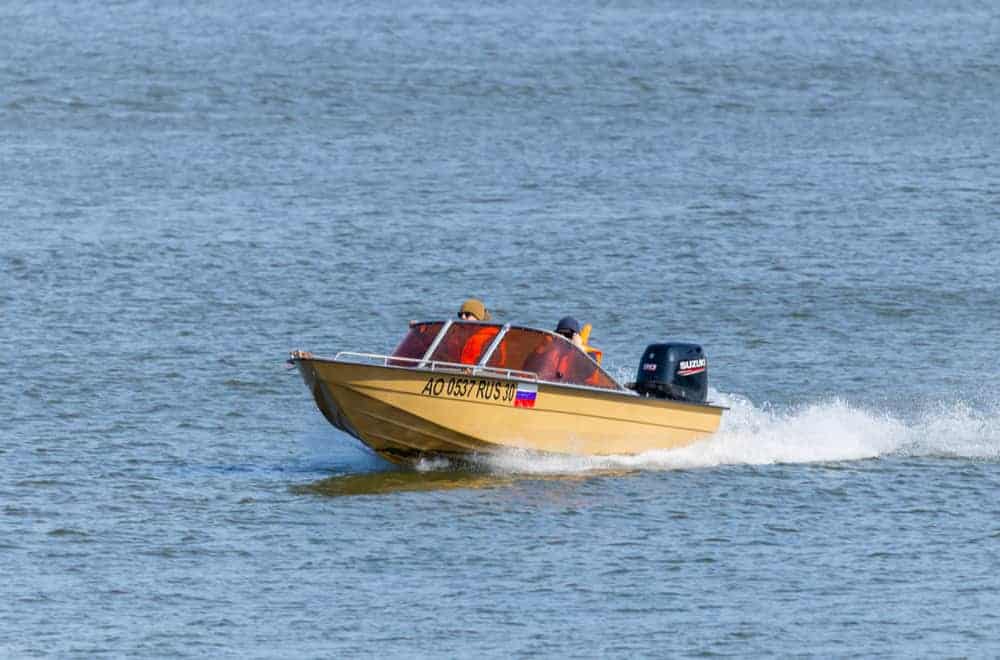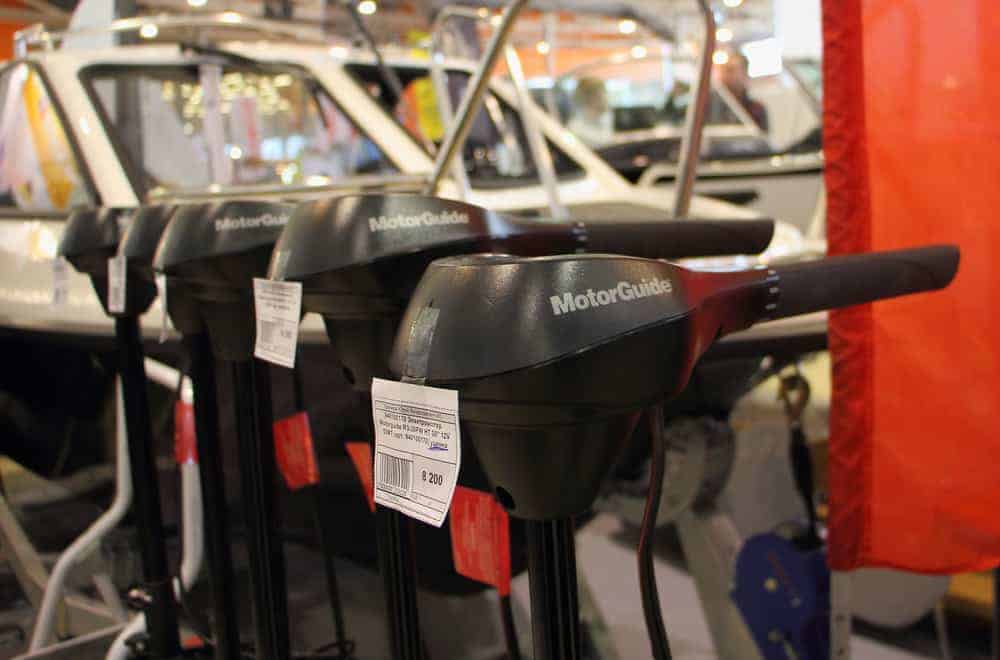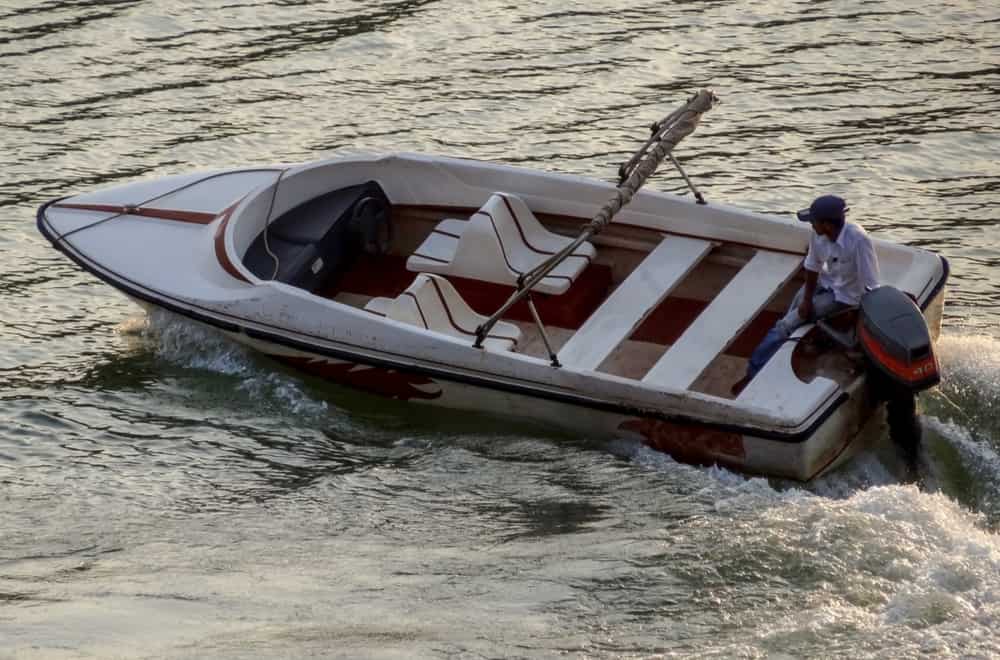The canoe is symbolic of humanity’s relationship to the water. These once hand-carved vessels allowed the earliest people the opportunity to travel, fish, hunt, and explore.
Today, people continue to love the experience and simplicity of paddling a canoe. However, you may run into situations where a little extra boost from a motor would be nice.
The good news is that you can retrofit your canoe with a trolling motor. Let me help you understand the ins and outs of having a motorized canoe.
Table of Contents
What Is A Trolling Motor?
Whether you are an avid angler quietly fishing the shoreline or needing to stay in a spot against the current when the use of an anchor is not feasible, a trolling motor is just what you need.
Boat owners typically use trolling motors as a secondary propulsion system for various circumstances. Whether you maintain it for emergencies or find yourself needing to push forward at a slow and steady pace, these lightweight motors will do the trick.
Electric vs. Fuel Driven
The advantages of being stealthy, quiet, and lightweight are all synonymous with electric trolling motors. And because they weigh less, electric-powered trolling motors seem better suited for smaller boats such as canoes, kayaks, and even paddleboards.
Historically, people think that fuel-driven motors offer more power and range than electric versions. But honestly, the difference is almost negligible with the current advancements in sustainable drive options in the marine engine industry.
Besides, racing was never the intent for a trolling motor in the first place. That said, what people refer to as a fuel-driven trolling motor is simply a small gas-powered outboard motor with proportionally low horsepower (usually a 2-3.5 HP motor).
Electric-powered trolling motors come rated in terms of pounds of thrust rather than horsepower. For this, the higher the number, the better. In addition, electric outboards come in 12, 24, and 36 Volt configurations.
Types Of Trolling Motors
Depending on your boat and particular needs, you can select between several types of trolling motors. Although the transom-mount is popular on small to medium-sized boats due to its ease of installation, a bow-mounted trolling motor has many benefits.
A rear application usually only involves attaching the trolling motor to the boat’s transom using a clamp. This version is relatively easier to operate and tends to be less expensive than bow-mounts.
You can retrofit a canoe with either a bow or transom-mounted trolling motor. However, please note that installing a bow-mounted transom motor has unique requirements.
Despite its more complicated installation, bow-mounted trolling motors work by pulling your boat through the water instead of pushing from the rear. For you, this means better overall control and maneuverability.
In regards to control options, transom motors most typically utilize one of three steering methods:
- Tiller: A tiller is another word for a steering handle attached to the motor’s rudder. Move the handle in the opposite direction you want the boat’s bow to go to operate a tiller. Whether talking about a trolling motor or outboard motor, tiller options are typically the least expensive. If you don’t mind your hands occupied or the need to be seated near the trolling engine to direct it, then it’s time to begin your search for the best transom mount trolling motor.
- Hand-Held Remote Control: If you want to have more movement freedom around your boat, you can opt for a hand-held remote-controlled trolling motor. Provided that you maintain an onstruction0-free line-of-sight between the remote and motors head, a clear signal will allow you to maneuver the direction of your boat from any position digitally.
- Foot-Pedal: For those of you who prefer to have your hands free to do other things, a foot-pedal controlled trolling motor is the best option. Be sure that your boat’s deck has enough room for the electrical and steering cables, along with the foot pedal. Be sure always to stay aware of your surroundings so that these elements do not become a trip hazard for you or your passengers.
A GPS Autopilot System is a unique feature that you may notice when searching for a suitable trolling motor for your canoe. Systems like the Minn Kota i-Pilot, are high-end pieces of equipment that will allow you to lock in to one position or bounce between various pre-set coordinates while having complete freedom of movement without worrying about straying off course.
Quick Guide For Trolling Motor Selection
Whether you want some extra power to haul people, gear, and supplies across the water or find the trolling motion beneficial to your fishing needs, you ought to be aware of the capabilities, uses, and ratings when choosing a trolling motor.
First and foremost, locate the capacity plate on your canoe. Since the 1970s, all small boats have a mounted USCG Capacity Plate somewhere inside the boat’s hull, usually near the transom.
These plates outline the maximum weight and power capacity for your particular boat. If you exceed these limitations, you will be out of compliance with maritime regulations, and your safety is at risk.
Keeping your canoe’s capacity in mind, consider the following when finding a trolling motor suitable for your intended use:
- Trolling Thrust: It is difficult to calculate the conversion between thrust and horsepower; however, the lads at PaddleCamp have been nice enough to share that, “generally speaking, 75 lb. of thrust is roughly equal to 1 gas engine horsepower.” But to your benefit, most trolling motor manufacturers will demonstrate some comparison chart.
- Voltage: This refers to both the amount of charge a particular trolling motor can handle in addition to the achievable thrust output when fully charged. For example, a 24V/ 80 lbs thrust trolling motor will generate 80 pounds of thrust powered by a 24-volt battery.
- Motor Shaft Length: To determine the most suitable shaft length when retrofitting your canoe with a trolling motor, you must first measure from the top of the transom to the waterline. Minn Kota recommends that “the center of the motor section [be submerged] at least 12 inches.”
PRO-TIP: When selecting a suitable trolling motor for your canoe, consider your boat’s length, capacity, and overall weight to be pulled or pushed through the water.
Fitting A Trolling Motor To Your Canoe
Canoes are typically designed with a pointy bow and stern or come squareback. That said, you can mount a trolling motor to the bow, stern, or side based upon your particular canoe.
The ideal location for a trolling motor will be a typical transom installation. Side mounts and bow mounts have their own unique set of installation considerations; however, I would like to empower you with the basics for mounting a traditional trolling motor to the rear of your canoe.
Installation is a synch if you have a squareback canoe because its rear deck is essentially the trolling motors mount space. This is great because you do not have to do any additional work to hold the weight of the trolling motor chosen safely.
If you do not have a squareback canoe, then be prepared to design a trolling motor mount for your canoe. If you want, ask your local dealer for a prefabricated motor mount; however, it is relatively easy to design on your own.
Here is what you will need:
- Cross Beam: This beam must be long enough to cover the width of your canoe at the desired mount location. Be sure to leave an extension of approximately 12 inches to one side. You can choose between solid wood, durable aluminum, or composite material for this piece.
- Clamps: Along the cross beam, you should have 2 star bolt knob screw-in clamps for securely hand-tightening your trolling motor bracket to the canoe.
- Rectangular Block: This block will be what your trolling motor clamps to.
The measurements will vary depending on your particular canoe and where you mount the trolling motor. Whether buying a universal motor mount for your canoe or going the DIY route, remember to secure a safety line from your trolling engine to the canoe for added security.
For a properly designed motor mount, consider the following:
- Most suitable trolling engine size for your boat (do not exceed capacity)
- Location of the trolling motor (bow, stern, or side)
- Proper motor shaft length for your canoe
And during installation, be sure that you:
- Securely fit cross beam to the gunwales of your canoe (wood or aluminum brackets should sandwich the top sides of your canoe).
- Use suitable screws and attachments to attach the mounting block and hold the brackets in place.
- Tightly screw motor clamps to the mounting block.
- Fasten a security rope from your trolling motor to some fixed point on your canoe.
Once you have mounted the trolling motor top your canoe, perform a test drive near shore, preferably in the presence of a trusted spotter that is prepared to react if anything should go awry.
Conclusion
As an avid outdoorsman, I have found myself in quite a few pretty precarious situations. Of course, you would not want to find yourself down ‘muddied’ creek without a paddle, but if you do, a trolling motor could be your best friend.
If you would like help selecting the right trolling motor for your canoe or need help designing a motor mount before your next trip, please don’t hesitate to leave your questions or concerns in the comment section below.

Joseph Fabiano is a writer, nature enthusiast, and stay-at-home father of two wild and free boys. He enjoys starting his day with a good run, hot mug of coffee, and a jump in the Ionian Sea, no matter the weather. Currently based in the Apuglia region of southern Italy, he enjoys discovering the world with his best traveling buddies (his little monkey’s and beautiful wife) at every given opportunity. Every trip, long or far, should be made an adventure according to Joseph as he believes inspiration and creation is right in front of you.
